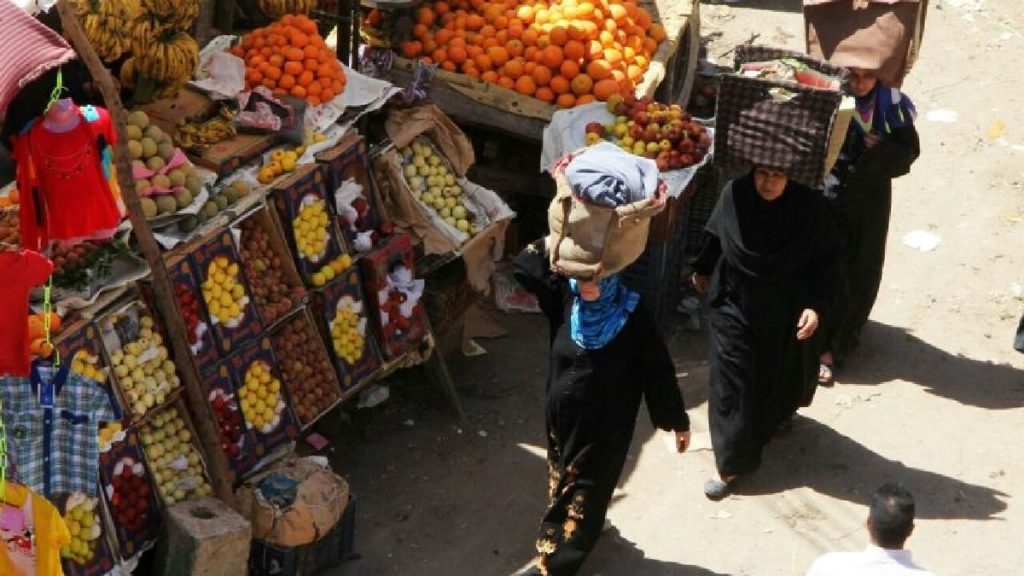Watan-The dramatic transformations that have swept through Arab countries in recent decades were not isolated from Arab currencies.
These transformations, coupled with failed economic plans in several of these countries, led to their collapse, affecting development, economic momentum, and the lives of citizens inherently tied to the fluctuations of these currencies.
In the early 1980s, Arab currencies, including those of non-oil-producing countries, represented a strong image in the foreign exchange market against foreign currencies.
However, what happened afterward, and how did the currencies of at least six countries collapse, falling into decline after being referred to as robust due to their purchasing power?
The history of Arab currencies and the reasons for their collapse:
The history of Arab currencies and the reasons for their collapse During this crucial period, the US dollar, according to data from the World Bank database, was worth less than the Egyptian pound (only 70 piasters).
It was worth 3.9 Syrian pounds. Meanwhile, the Jordanian dinar equaled 3 dollars, and the Sudanese pound equaled 2.6 dollars. The Somali shilling equaled 3.4 dollars, while the Iraqi dinar equaled two dollars.
According to a report published by Al Jazeera, the consequences of the 1980s were significant, as several Arab countries adopted socialist economic systems and state control, with most of their external transactions conducted based on equal deals.
External transactions were naturally limited due to the policy of promoting exports instead of imports through state-owned enterprises.


Monetary Policy
There wasn’t a need to travel abroad and acquire foreign currencies; it represented a burden and a significant demand on foreign cash.
Additionally, monetary policy relied on an administratively fixed pricing system for the local currency, so the exchange rates of Arab currencies didn’t operate according to the supply and demand mechanism.
According to the same source, obtaining foreign currency before the exchange rate was liberalized in Arab countries during the 1980s required conditions that might not have been available to everyone, and banks did not meet the needs of those seeking foreign currency (despite their small number).
This created a parallel situation to the foreign exchange market, but it was not active or significantly affecting the exchange rate as it does today.
Rising Corruption Rates
However, the situation differed significantly in 2024, where the exchange rates of Arab currencies for non-oil-producing countries faced strong depreciations against foreign currencies.
The official exchange rates for the US dollar currently stand as follows.More than 30 Egyptian pounds at the bank rate, while it surpassed 60 pounds in the black market and reached 70 pounds just days ago. Around 546 Sudanese pounds.
Approximately 1,450 Iraqi dinars. 1114 Yemeni riyals. 492 Syrian pounds. 571 Somali shillings. 3.1 Tunisian dinars. These are rates that differ significantly from the parallel market, affecting the lives of citizens of these countries in terms of rising prices and inflation.
Another factor that contributed to the collapse of Arab currencies is the rise in corruption rates, especially in countries experiencing political and security instability.
A report by Transparency International for 2023 concluded that all countries whose currencies collapsed or depreciated in the Arab region suffer from high corruption rates.
Somalia ranks at the bottom of the list of countries on the transparency index at 180th place, followed by Syria at 177th place, Yemen at 176th place, Libya at 170th place, Iraq at 154th place, and Egypt at 108th place, with the index including 180 countries.
According to the source, what happened in Syria, Lebanon, Sudan, Yemen, Somalia, and Iraq is undoubtedly a collapse. As for the situation in Egypt and Tunisia, it is still within a context of significant decline and has not yet reached collapse, but there are no strong productive foundations in both Egypt and Tunisia to help them emerge from the decline in currency value, as efforts are being made to increase exports.
Increased Demand for Foreign Currency
The world witnessed the beginning of economic globalization in the early 1990s, and Arab economies adopted market economy models, adjusting their monetary, fiscal, and production policies.
Most non-oil Arab countries entered reform programs with the International Monetary Fund, obligating them to liberalize their local currency exchange rates, which put Arab currencies in a new equation.
With the development of foreign economic relations, the movement of imports of goods and services flourished, and travel was allowed for all categories of businessmen, students, and those interested in foreign tourism, creating a new demand for foreign currency that didn’t exist before.
Figures indicate a significant development in foreign trade in the Arab world. In 1990, Arab imports of goods and services amounted to $175.6 billion, while in 2020, it reached $922.2 billion, meaning a 426% increase in these imports, as well as for Arab exports.
From goods and services, their value reached about $307 billion in 2001, while it reached $936 billion in 2020, meaning these exports increased by 204%.
Although the numbers reflect the reality of the Arab world as a whole, all non-oil Arab countries suffer from a deficit in their foreign trade relations, negatively affecting their foreign exchange situation and increasing the demand for the dollar.
Political Instability One of the important factors in the collapse of Arab currencies is political instability Some Arab countries witnessed political and security events that greatly harmed their economic conditions, such as Somalia, where state institutions collapsed in the early 1980s.
Sudan has experienced successive political events, the most damaging to the economic reality being the separation of South Sudan in 2011, followed by the April 2019 events that toppled the Bashir regime.
The situation was no different in Iraq, which was subjected to US occupation in 2003, while several Arab countries experienced armed conflicts after the Arab Spring in Libya, Syria, and Yemen. Lebanon also faced an economic crisis at the end of 2019, which deepened in 2020 and beyond.
Egypt and Tunisia also witnessed negative economic events after the end of the Arab Spring era.


Dollarization Disease
One of the negative phenomena associated with the decline and collapse of Arab currencies is the phenomenon of dollarization, where savers and traders have turned to linking their savings or commercial activities to the dollar in both buying and selling, depriving themselves of local currencies.
The dollarization disease has led to the emergence of new currency speculators, further burdening economic activity by abandoning production or creating new job opportunities, stabilizing existing jobs, and expanding speculative business activities.
Amid the previous fluctuations witnessed by Arab countries, where their currencies collapsed or depreciated, their other economic indicators were affected, such as foreign exchange reserves.
Citizens and Currency Collapse
But what is the impact of the collapse of Arab currencies on the citizens of those countries?
In response to this question, the mentioned report indicates that Arab citizens, in non-oil countries, bear several burdens due to the collapse of Arab currencies, with the most prominent being the collapse of the value of savings for those who keep their savings in local currencies.
We can imagine the situation in Sudan, where the dollar went from being equivalent to between 40 and 50 pounds to over 500 pounds.
In Egypt, for example, at the beginning of the third millennium, the dollar was around 3.30 pounds, and by 2024 it had reached 30 pounds at the official rate. This scenario was repeated in other countries that witnessed a decline or collapse of their local currencies.
The report concludes that the value of a currency in any economy accurately reflects the economic situation unless there are exceptional circumstances.
Despite the depreciation of the currencies of Libya and Iraq as two oil-producing countries, they are still classified as stagnant countries, even before political or security crises occurred. Even if oil provides better exchange rates for the currency of oil-producing countries, it has not changed the development reality at all.















